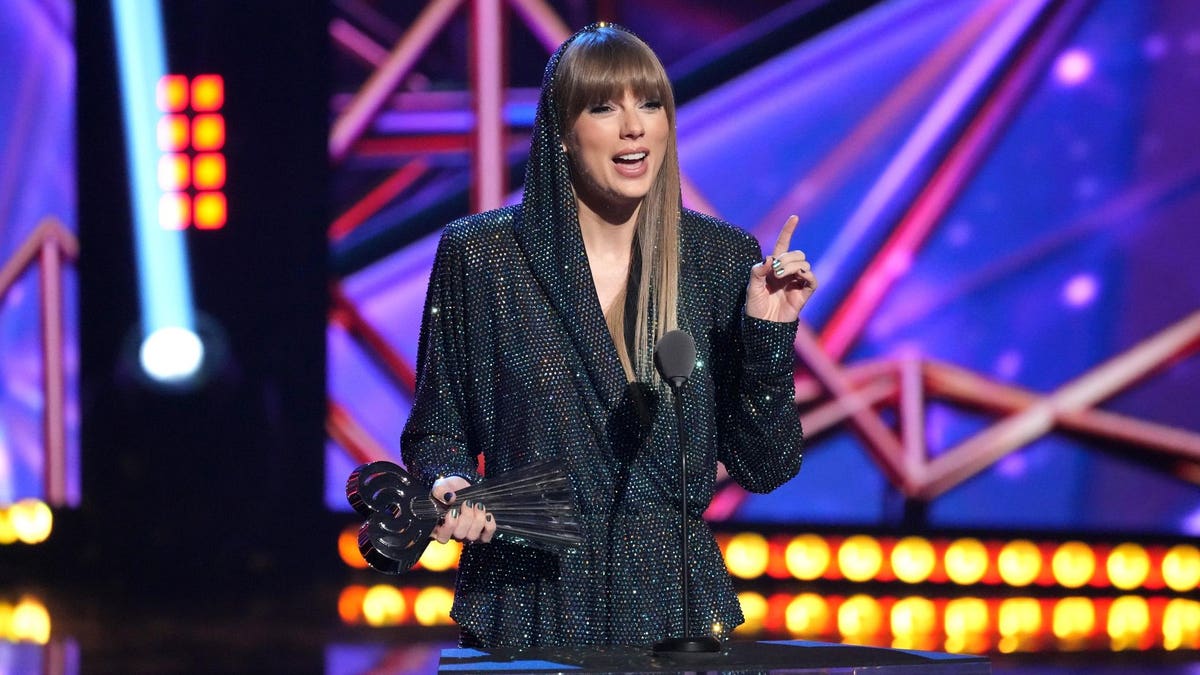Taylor Swift fans have posted countless videos during the singer’s record-breaking Eras Tour—from trading friendship bracelets to capturing concert footage. Fans also share clips from Swift’s speeches, especially on TikTok.
It should be no surprise that ‘Swifties’ are enamored of their idol’s speeches. Swift is a celebrated songwriter who applies her remarkable storytelling skills and knowledge of rhetorical devices to write engaging speeches.
Vivid metaphors
Swift uses evocative metaphors in her songs to create vivid mental pictures. For example, In “Love Story,” she compares a relationship to the forbidden love between Shakespeare’s Romeo and Juliet. “Romeo take me somewhere we can be alone…you’ll be the prince and I’ll be the princess.”
In “Blank Space,” Swift uses the metaphor of a blank space to show that she’s willing to give a new love a chance, despite the “long list of ex-lovers.”
In Swift’s speeches, she uses the same powerful rhetorical device to illustrate complex ideas. For example, in her 2022 NYU commencement speech, she told graduates that everyone—including Swift—represents “a patchwork quilt” of people who have helped them reach their destination.
Swift launched a firehose of metaphors at the audience when she received the Songwriter of the Decade award in Nashville. She compared songwriting to “a magical cloud that floats down right in front of you in the form of an idea for a song…you shape it like clay… Prune it like a garden…and wish on every lucky star.”
Metaphors are an essential component of a speaker’s toolkit.
Personal anecdotes
Every speech or presentation should include personal stories that connect the speaker to their audience. Swift generously shares such stories to relate to her audience.
Speaking to NYU students who had spent their final college year locked down in the pandemic, Swift related her journey to their experience (and connected them with a metaphor). Swift said,
I never got to have the normal college experience, per se. I went to public high school until tenth grade and finished my education doing homeschool work on the floors of airport terminals…But I really can’t complain about not having a normal college experience to you because you went to NYU during a global pandemic, being essentially locked into your dorms or having to do classes over Zoom…You and I both learned that you don’t always get all the things in the bag that you selected from the menu in the delivery service that is life.
Parallel structure
Parallelism involves using a similar grammatical structure or repetition in successive sentences and phrases. It adds rhythm and symmetry to the spoken word.
Swift is an expert at using parallel structure to create earworms like she does when she shakes it off:: “players gonna play, play, play…haters gonna hate, hate, hate.”
When Swift received her songwriting award, she expressed her gratitude for the honor when every artist or songwriter hopes for “One great year. One great album cycle… One great run at radio…One glorious moment in the sun.”
Note that Swift changes one word in the last phrase (from “great” to “glorious”) to break the pattern, a highly skillful speechmaking device to keep the audience’s attention.
Playful humor
Finally, Swift uses humor to make her message relatable and enjoyable to hear.
“I’d like to thank NYU for making me technically, on paper at least, a doctor,” Swift began in her commencement speech.
“Not the type of doctor you would want around in the case of an emergency, unless your specific emergency was that you desperately needed to hear a song with a catchy hook and an intensely cathartic bridge section. Or if your emergency was that you needed a person who can name over 50 breeds of cats in one minute.”
By starting her speech with self-deprecating humor, she signals to the audience that she approaches the title with humility and that they should be in for a fun ride. It made the serious advice Swift offered in her conclusion all the more powerful—which she delivered in parallel structure:
“Hard things will happen to us. We will recover. We will learn from it. We will grow more resilient because of it. As long as we are fortunate enough to be breathing, we will breathe in, breathe through, breathe deep, breathe out. And I’m a doctor now, so I know how breathing works.”
Effective public speaking is hard work. Pull a page from Taylor Swift’s songbook (of speeches) to improve your ability to shape words and engage audiences.
Read the full article here





